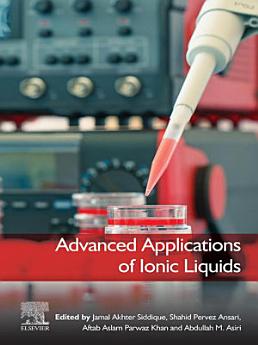Advanced Applications of Ionic Liquids
ກ່ຽວກັບປຶ້ມ e-book ນີ້
ກ່ຽວກັບຜູ້ຂຽນ
Jamal Akhter Siddique is an Associate Professor at the School of Basic and Applied Sciences (SBAS), Lingayas University, India. He successfully completed multiple Postdoctoral Research tenures around the globe in renowned universities. He earned his Ph.D on “Physico-chemical studies of biological/biochemical systems in 2007 from the Department of Chemistry, Aligarh Muslim University. Apart from direct involvement in research he has also contributed his experience to multiple journals as editorial member and worked as a Guest-Editor for a Special Issue entitled “Nanostructure Materials as a Promising Route for Efficient Renewable Energy Production, Storage, and Conversion, Journal of Nanomaterials; as a Guest-Editor for a Special Issue entitled “Academic Research for Multidiscipline in International Journal of Science Technology and Society; and as an Assistant-Editor for Journal of Medical Imaging and Health Informatics.
Prior to joining AMU, Dr. Ansari worked as researcher at the Umm Al Qura University, Makkah, Kingdom of Saudi Arabia. He co-authored one textbook “Faiz’s Polymer Chemistry: A problem solving approach. He has contributed several chapters in books published by Elsevier, Springer, Wiley. He has also published several research papers in the field of conducting polymers, nanocomposites, and photocatalysis in journals of high repute. He has been granted one patent in India. Dr. Ansari obtained his PhD in Applied Chemistry in 2011 and presently, he is engaged in teaching of M.Sc (Polymer Science and Technology) and B.Tech. students.
Dr. Aftab Aslam Parwaz Khan is presently working as an Assistant Professor in the Center of Excellence for Advanced Materials Research, King Abdulaziz University, Jeddah, Kingdom of Saudi Arabia. He earned his Ph.D. in Chemistry from Aligarh Muslim University, Aligarh, India in 2011. He has authored 3 books, 15 chapters and more than 130 research papers published in journals of international repute. He is also an Editorial Board Member, as well as a reviewer of many reputed international journals. His research encompasses all aspects of nanomaterials, synthesis, and characterization as well as application in chemical sensing, biosensing environmental remediation of pollution, and drug delivery system for mechanistic and interaction studies using a wide range of spectroscopic techniques and thermodynamic parameters.
Prof. Abdullah M. Asiri is the Head of the Chemistry Department at King Abdulaziz University since October 2009 and he is the founder and the Director of the Center of Excellence for Advanced Materials Research (CEAMR) since 2010 till date. He is the Professor of Organic Photochemistry. His research interest covers color chemistry, synthesis of novel photochromic and thermochromic systems, synthesis of novel coloring matters and dyeing of textiles, materials chemistry, nanochemistry and nanotechnology, polymers and plastics. A major achievement of Prof. Asiri is the discovery of tribochromic compounds, a class of compounds which change from slightly or colorless to deep colored when subjected to small pressure or when grind. This discovery was introduced to the scientific community as a new terminology published by IUPAC in 2000. This discovery was awarded a patent from European Patent office and from UK patent. He is also a member of the Editorial Board of various journals of international repute. He is the Vice- President of Saudi Chemical Society (Western Province Branch). He holds four USA patents, more than 800 Publications in international journals, seven book chapters, and ten books






